We’ve all seen, or maybe even experienced, the devastating effects bushfires can have on the Australian landscape and those who live in bushfire-prone areas. In several famous cases, many people have lost their homes and even their lives because of bushfires. It’s not a matter to be ignored, so your best approach is to understand exactly what your risk is and the steps you should take to protect your home and most importantly, your loved ones. This is where a BAL rating comes into play.
A BAL (bushfire attack level) rating is a system designed to measure the potential risk a house could face in a bushfire-prone area. The system is based on decades of extensive research to determine when homes are most in danger from bushfire and what key factors make an area considered bushfire prone. Let’s delve into how BAL ratings are determined, the different ratings your site can be given and what this means for you moving forward.
Quick Tip: It’s vital to understand that the BAL rating is directly related to bushfires only. Your rating has nothing to do with your house’s chances of other types of fire (for example, due to an accident).
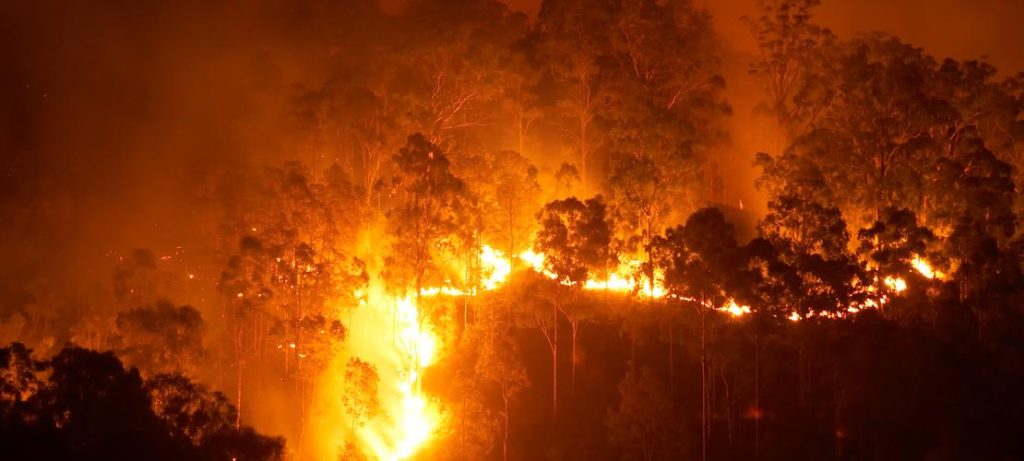
What does bushfire attack level (BAL) ratings mean?
In the most basic terms, a BAL rating indicates how much danger a property is likely to be from a potential bushfire and its chances of. From this information, building and construction requirements for your new home can be determined, the ultimate goal of which is to protect your home from fire. The key factors considered when devising a BAL rating are:
- ember attack
- radiant heat flux
- direct flame contact

It should be noted that a low BAL rating doesn’t mean you’re invincible, just that your potential risk is lower.
What are the different categories and classifications of bal ratings?
BAL Low: Radiant heat exposure of 0-12.5kW per sqm. The lowest risk you can achieve in a bushfire-prone area
BAL 12.5:Radiant heat exposure of 0-12.5kW per sqm. Ember Risk. There is a very low risk and there will be some construction requirements.
BAL 19: Radiant heat exposure of 12.5-19kW per sqm. Increasing levels of ember heat flux and greater risk of exposure to flames, burning debris and
BAL 29:Radiant heat exposure of 19-29kW per sqm. Increased heat flux, making this a high-risk rating. Your home will have more construction requirements than the previous rating.
BAL 40: Radiant heat exposure of 29-40kW per sqm. Increased exposure to flames, and a very high risk of exposure to flames, ember attack and radiant heat flux. More building elements will have to undergo special construction methods.
BAL FZ (Flame Zone): Radiant heat exposure of 40+kW per sqm. Very high risk of ember attack, heat flux and direct flame contact. If possible, it’s usually not recommended you build in a BAL FZ-ranked area.
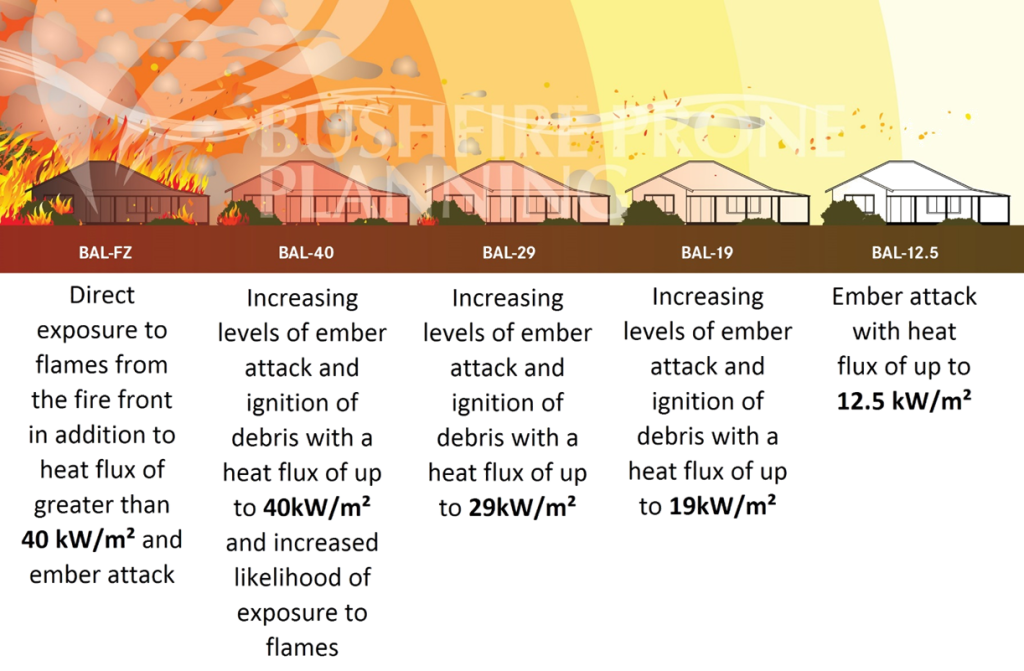
How is a BAL rating assessed?
A BAL rating assessment is performed by a qualified professional who will inspect your property for certain tell-tale signs of bushfire risk. The key steps in this process are as follows:
- Determine your property’s Fire danger index (FDI)
- Get a thorough idea and understanding of your site’s vegetation and any nearby vegetation.
- Determine the distance between your home and the vegetation.
- Figure out the slope beneath the vegetation in question.
- From the above information, work out the BAL
- Once a BAL rating is determined, set the construction requirements the building will have to follow according to the Australian standard and National Construction Code.
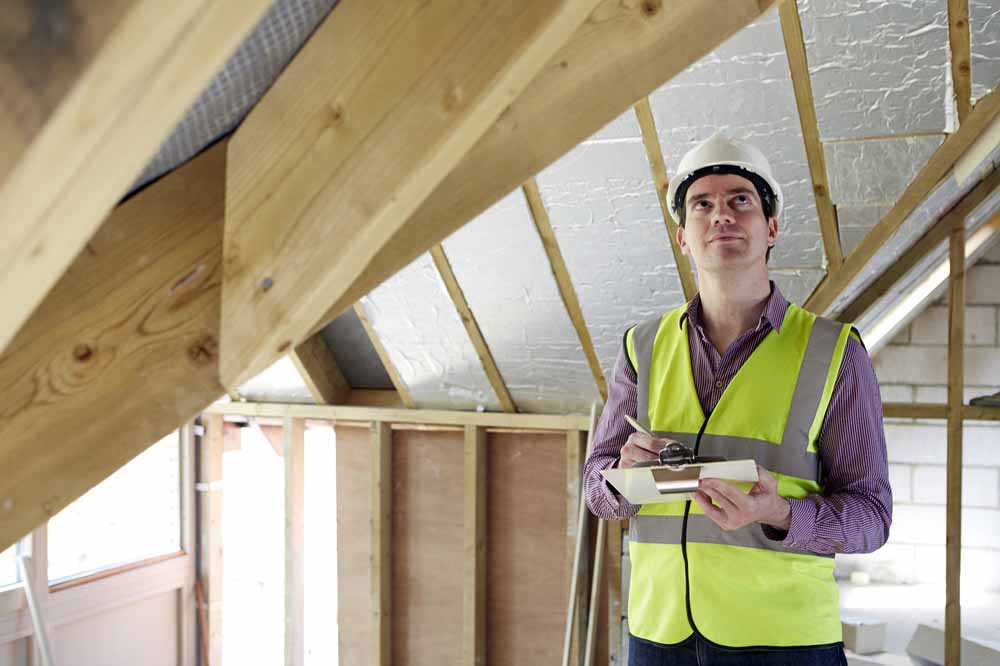
What implications does a BAL rating have on a building?
Depending on the BAL rating your site receives, you may need to take extra steps to ensure your home is up to code and safe. These steps aren’t just friendly recommendations, but legal requirements, so it’s in everyone’s best interest you take them seriously. Let’s take a look at some of the key ways a BAL rating can influence your next build.
Building design & construction
Depending on the BAL rating your home receives, you may need to take specific steps to ensure your house meets safety standards. Here are some of the steps that are taken in bushfire areas.
External Walls
In any area with a BAL rating of 19 or higher, you’ll need to build your external walls out of non-combustible materials or bushfire-resistant timber. In BALFZ areas, materials like fibre cement are often used to provide homes with the most heat resistance.
Roofing
Roofing must be made from non-combustible material such as steel if your BAL rating is 40 or higher. If you have BAl 12.5 or higher, your roof must be fully sarked and the junction between the wall and roof must be completely sealed.
Windows
Any glass openings, including windows and glass doors, run the risk of cracking or shattering in a bushfire and therefore need to be thicker and stronger to help prevent this risk.
Decks and under walls
Depending on the rating, your decking will need to be made from non-combustible materials.
Water Tanks
Depending on your local council, you may be required to have a water tank on site to assist firefighters in the event of an emergency.
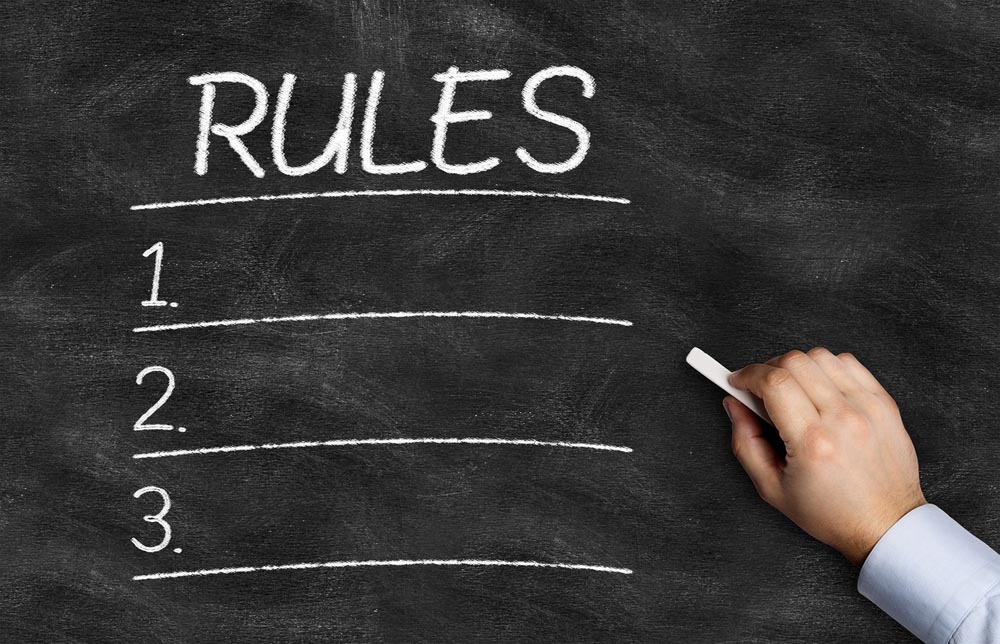
Planning & zoning
Before new land can be approved, its bushfire risk needs to be identified. Some areas are simply more vulnerable to bushfires and aren’t safe to build on. BAL ratings have a serious influence on where houses are built, especially when new developments are being considered.
Does a BAL rating impact property value?
Your BAL rating could have a severe effect on your property value. The higher your BAL rating, the more of a hit your property value is likely to take. If you’re in a BAL 40 or BAL FZ-rated area, this could be a real turn-off to potential buyers.
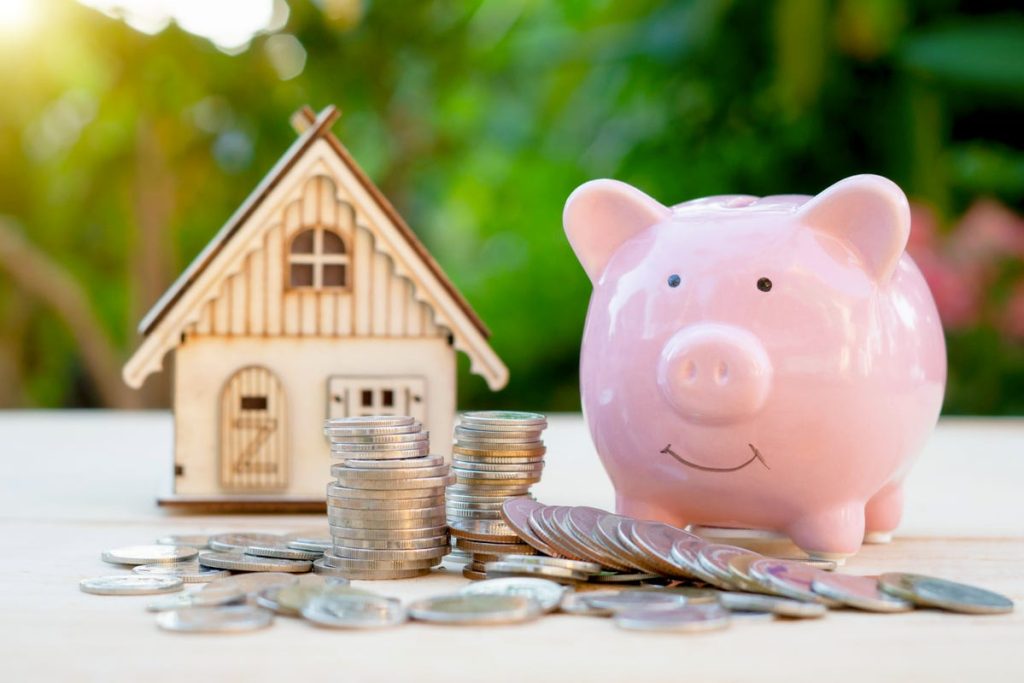
Does a BAL rating impact property insurance?
Insurance prices for anything -from your car to health insurance – will go up if the insurer deems that there is a higher risk. For example, if you’re involved in a crash that was your fault, your car insurer will charge you more. This same logic applies to property insurance in regard to houses in flood zones and if you’re in bushfire-prone areas. A higher BAL rating will require you to take out a more comprehensive insurance policy which will cost you more money. This will be especially challenging if you build in a BAL 40 or BAL FZ-rated area



0 Comments